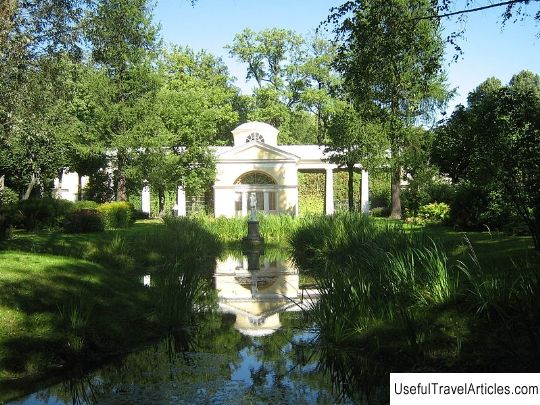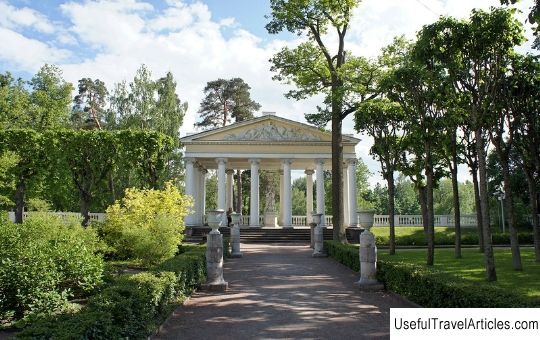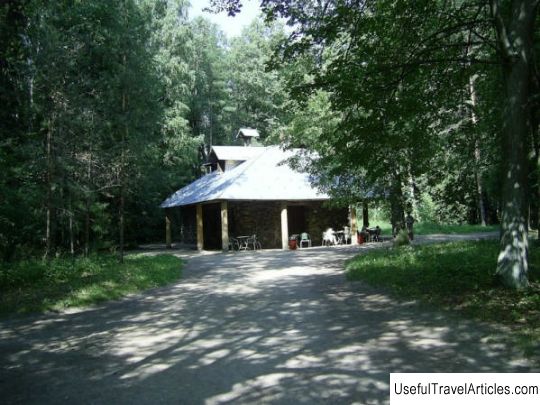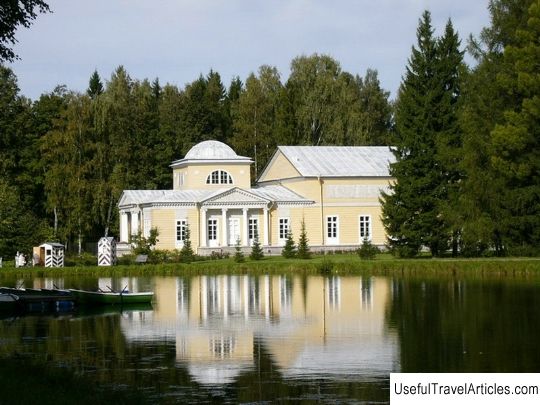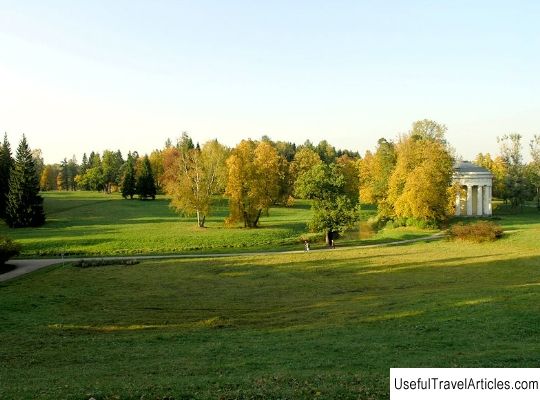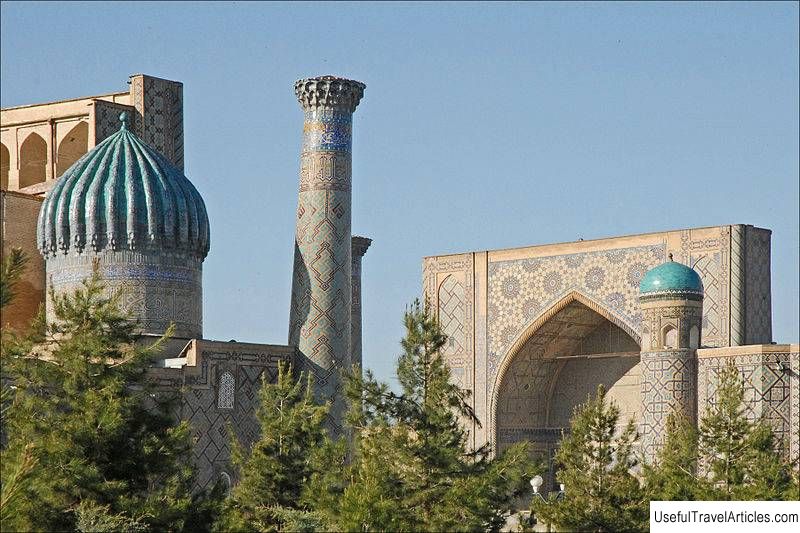Pavilion Aviary in Pavlovsky Park description and photos - Russia - St. Petersburg: Pavlovsk
Aviary pavilion in Pavlovsky Park description and photos - Russia - St. Petersburg: Pavlovsk. Detailed information about the attraction. Description, photos and a map showing the nearest significant objects. Photo and descriptionOne of the first architectural buildings of the Pryvortsovy district of Pavlovsky Park, created by the architect Charles Cameron, is the Aviary or Poultry House, built in 1782. Before their trip to Europe, Pavel Petrovich and Maria Feodorovna discussed with Cameron the project of the Pavilion and its future purpose. There is information that they were very worried about the fate of this building. As a result, Charles Cameron created one of the most beautiful pavilions, made in the classical style. The laconic decor and strict proportions gave the Aviary an amazing appeal. The central hall of the Pavilion has the shape of a square, on the main facade it stands out with a portico, a drum with a dome and semicircular windows complete it. He was always full of light. The effect was enhanced by the glass doors located opposite each other and eight mirrors in molded frames, pushing apart the space of the hall and giving it additional lighting. The architect took particular care in concentrating the greatest amount of light in the Aviary Pavilion. The northern colonnade, located closest to the Triple Linden Alley, was wrapped in a wire netting, which was decorated with the monograms of the owners of Pavlovsk during illumination days. Climbing plants from the outside all over the net. The southern colonnade was intended for receiving guests. In this place, Maria Fedorovna organized "lunch and evening meals", chamber balls. In 1783, antique antiquities bought there arrived from Italy, some of them were placed in the Aviary. In 1804-1806, the architect Andrei Nikiforovich Voronikhin built annexes to the side buildings. Forty antique burial urns and two antique sarcophagi were placed here. Maria Fedorovna was a passionate lover of flowers. She turned the Aviary Pavilion into the true kingdom of the goddess Flora. There were luxurious flower gardens and two greenhouses where exotic plants grew. All this beauty made you forget about the harsh climate of St. Petersburg. The statue of Flora, made of marble, was brought from Italy and installed in the Aviary. She sanctified this flower kingdom. Initially, the Aviary Pavilion delighted with graceful painting, executed in the antique-Roman spirit. The artists I. Rudolf and I. Ivanov worked on it under the direction of the architect Vincenzo Brenna. Time and the northern climate did not spare the works of C. Cameron. Under the Grand Duke Konstantin Nikolaevich, the Pavilion underwent alterations. In 1862, instead of greenhouses, verandas were erected, and a pond was dug between them. A statue of Aphrodite Callipigi appeared in the center of the pond, and on the other side - a statue of Actaeon with a killed deer. In 1940, the Aviary Pavilion was restored. During the Great Patriotic War, the Aviary was damaged by bomb fragments. The statues on the pond were stolen by the Nazis. In 1967-1968, under the leadership of the architect Sofia Vladimirovna Popova-Gunich, a major restoration of the Aviary was carried out. The original exterior of the building has been restored. Currently, the pond in front of the Pavilion is decorated with a sculpture of Venus of Italy (an Italian copy from the original by sculptor Antonio Canova). Made of marble. Every year since 2001, the International Flower Festival "Imperial Bouquet" has been held in Pavlov's Aviary Pavilion. It is dedicated to the memory of the first mistress of Pavlovsk, Empress Maria Feodorovna. Aviary, as in previous times, turns into the kingdom of Flora. Here you can see exhibitions of florists, photographers, artists.      We also recommend reading The Pierides Foundation Museum description and photos - Cyprus: Larnaca Topic: Pavilion Aviary in Pavlovsky Park description and photos - Russia - St. Petersburg: Pavlovsk. |
